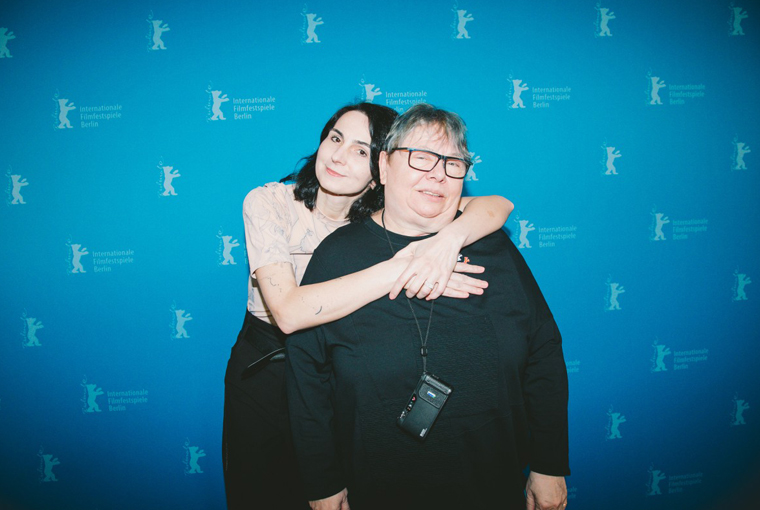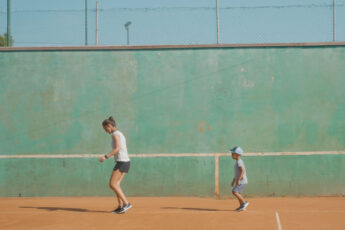Libuše Jarcovjáková and Klára Tasovská on I’m Not Everything I Want to Be?
Vol. 144 (April 2024) by Sonya Vseliubska
We recently sat down with Klára Tasovská and Libuše Jarcovjáková to discuss “I’m Not Everything I Want To Be”. The film, helmed by Tasovská, chronicles Jarcovjáková’s eventful life and formation as a photographer. Tasovská and Jarcovjáková relate how the project started, how they bonded over it, and how they understand the film and what it reveals.
Klára and Libuše, how did you meet each other and launch the project?
Tasovská: I had known about Libuše’s work for a while, but I only met her personally five years ago. Initially, I was asked by Czech Television to make a documentary about her, but eventually, the project transformed into a feature film.
Jarcovjáková: It is very funny because a lot of people have asked me if they can make a documentary about me. I was pretty skeptical at first because I never felt a connection with the persons attached to the previous projects. Maybe because I never shared mutual interests with them, nor did I feel that they were familiar with my type of art. But then I met Klára. After a couple of encounters, I felt that she was the right person, so I could open the door to the project. Let’s say it was the beginning of a very open and deep relationship.
Klára, you relate Libuše’s stories from her own perspective and with her own vision in mind – through thousands of photos taken over the span of decades that are reflective of different levels of intimacy. Can you please tell me about the process of working with the photographs and how you managed not to lose yourself in them?
Tasovská: There are a lot of photos. Her archive is comprehensive. One time, we counted all the photos we had. We ended up with the number 70 000 – 70 000 pictures taken from different periods of Libuše’s life.
The first decision I made is to make the narration flow chronologically so as to be able to depict how Libuše’s life and career unfolded. I also kept her personal diary in mind, so we always worked on synchronizing the photos with the text. We divided the story into six chapters and just began filling one chapter after another. It took us two years – just to solve that complicated puzzle we were trying to assemble out of five full years of production. Sometimes we sat down for eight hours a day with my editor, and still the process was very creative and engaging.
Jarcovjáková: Klára is such a perfect expert on my life now. I hope that when I become even older than I am now and I will start to lose my memory – Klára will be the person to recall everything.
In a way, the film challenges the slide show and its cinematic potential. The film is full of movement, particularly thanks to the sound and editing. How did you manage to create this dynamic Klára?
Tasovská: I was very lucky with my editor and sound designer Alexander Kashcheev. It was very important for us to find those photographs that had movement.
I tried to create a personal world that would allow the viewer to see things through Libuše’s eyes. But at the same time, it was important for me to show how long this journey and search were on Libuše’s part, and to make it relatable to contemporary eyes. So we dared to use more contemporary music and to use more experimental editing.
Libuše, has revisiting your own photographic and written documentation of self and society unveiled some new answers to what escalated your desire to document reality and do it in that particular style? And where does FAMU stand here, because from the film we gather that it was one of your biggest dreams to study there.
Jarcovjáková: I entered FAMU in the 80s. Although the school influenced me, the atmosphere was not the same as during the Czechoslovakian New Wave when it was still very popular. My biggest problem was that I was already somebody who had a very wild life, so being a good student was difficult for me, I was not able to remain focused. At the same time, I didn’t really want to try myself in film because during my teenage years I survived a certain breaking point in my life before the invasion, the period of cultural and political liberalization. We were full of hope and at the threshold of a normal life when the invasion destroyed everything.
I was very depressed for a long time because of what came after this political oppression, and because of how people began to be divided. Some of those people wanted to save their careers and collaborated with the invaders. That played a great role in my attitude towards life. It was the point where I decided to be myself and not to follow or adapt to these new rules, not to make compromises and just always try to think out of the box.
I wonder about the use of color in your photographs and the film. In your photographs, we can see Czechoslovakia in black and white, but as you begin to be active abroad as well, we can see more and more photos in color. They introduce contrasts to the whole film, and it is a bold move of Klára to sacrifice the unified style of the film to show such a contrast of your condition through photography.
Jarcovjáková: I mostly worked with black and white, because it was my language. Still, I tried to work with color from time to time, which is hard because that obliges me to change my POV. Actually, it was much simpler to get color films at the time, but I never felt at home photographing Prague in color.
And yes, it is also a good illustration of how I suddenly realized that there are some colors of freedom, like those of the sky and sea. But working with color was still an experimental phase for me at the time as I was still just a tourist while traveling abroad.
Thank you for the interview.




Leave a Comment